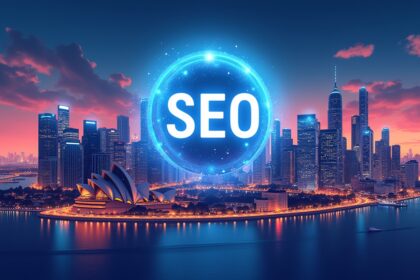In the ever-evolving landscape of digital marketing, one phrase has remained steadfast and relevant: “Content is King.” Despite the rise of new technologies, changing algorithms, and evolving consumer behaviors, content continues to sit at the heart of successful digital marketing strategies. But why has content maintained its throne amid all this change? This article delves into the enduring importance of content in digital marketing and why businesses must continue to prioritize high-quality, strategic content creation.
The Origins of “Content Is King”
The phrase “Content is King” was popularized by a 1996 essay written by none other than Bill Gates. In it, Gates predicted that content would be where much of the real money would be made on the internet. His foresight was remarkably accurate. Over the years, content has proven to be a foundational element in attracting, engaging, and converting audiences across digital platforms.
Content Drives SEO Success
Search Engine Optimization (SEO) is a cornerstone of digital visibility, and content is the fuel that powers it. Search engines like Google rely heavily on content to determine the relevance and authority of a website. High-quality, keyword-rich, and user-centric content helps websites rank higher in search results.
Key benefits:
- More content means more opportunities for keyword targeting.
- Consistent publishing signals activity and relevance to search engines.
- Well-structured content with headings, images, and internal links enhances crawlability.
Without fresh, relevant content, even the best-designed website can become invisible to search engines and, by extension, to potential customers.
Content Builds Brand Authority and Trust
Consumers are more likely to do business with brands they trust. Creating insightful, valuable content helps businesses establish authority in their industry. Whether through blog posts, whitepapers, case studies, or informative videos, content allows brands to demonstrate expertise and provide solutions.
Examples:
- A financial advisor publishing tips on money management.
- A software company sharing guides on maximizing productivity with their tools.
- A health brand creating educational content on wellness and nutrition.
These efforts not only attract attention but also foster a relationship of trust and reliability.
Content Fuels All Marketing Channels
Content isn’t just for blogs or websites—it fuels every part of digital marketing. Social media posts, email newsletters, paid ads, and even influencer campaigns all rely on compelling content.
How content integrates:
- Social media: Captivating captions, videos, and graphics.
- Email marketing: Personalized stories, offers, and news.
- Pay-per-click (PPC): Landing pages with persuasive copy and visuals.
- Video marketing: Scripted narratives and educational series.
Every campaign, no matter the platform, needs quality content to convey messages, persuade users, and drive action.
Content Enhances User Experience (UX)
A positive user experience is now a ranking factor in Google’s algorithm, and content plays a critical role. Clear, helpful, and engaging content reduces bounce rates and increases time spent on site—two metrics that indicate value to both users and search engines.
UX-focused content includes:
- Easy-to-read formatting (bullets, headers, short paragraphs).
- Fast-loading multimedia like images and videos.
- Interactive tools like quizzes, calculators, or FAQs.
Good content anticipates the user’s needs and delivers answers quickly and effectively.
Content Supports the Entire Customer Journey
From awareness to decision, content accompanies and influences users at every stage of the marketing funnel:
- Top of the Funnel (Awareness): Blog posts, infographics, videos that educate and inform.
- Middle of the Funnel (Consideration): Case studies, comparison guides, email campaigns.
- Bottom of the Funnel (Decision): Testimonials, product demos, detailed landing pages.
Creating content for every stage ensures you don’t just attract visitors—you guide them toward becoming loyal customers.
Content Encourages Engagement and Sharing
Shareable content helps extend your brand’s reach exponentially. Engaging articles, viral videos, and emotionally resonant stories invite users to comment, like, and share across platforms, effectively becoming organic brand advocates.
Tips for shareable content:
- Tell a story that resonates emotionally.
- Offer unique insights or valuable information.
- Use striking visuals and strong headlines.
User-generated content (UGC) and community engagement also fall under the broader umbrella of content marketing and are vital for today’s interactive digital spaces.
Content Is Cost-Effective and Offers Long-Term ROI
Compared to traditional advertising, content marketing often requires a lower upfront investment but yields longer-lasting results. A single well-written blog post can drive traffic for months or even years if it ranks well in search results.
Long-term benefits:
- Evergreen content continues to bring traffic.
- Lead magnets like eBooks build email lists over time.
- SEO-optimized posts reduce paid ad dependence.
Quality content is an asset that continues to deliver value long after it’s published.
Content Personalization Is the Future
With advancements in AI and data analytics, personalized content is more achievable than ever. Brands can now tailor content to different audience segments, increasing relevance and engagement.
Examples:
- Product recommendations based on browsing history.
- Personalized email content based on past behavior.
- Dynamic website content that changes per user profile.
Personalized content enhances the user experience and improves conversion rates, further solidifying content’s central role in digital strategies.
Final Thoughts: Long Live the King
Content is still king because it is the thread that ties every aspect of digital marketing together. From SEO to social media, from brand storytelling to conversion optimization, content remains essential. As technology continues to evolve, the formats and distribution channels may change—but the need for compelling, meaningful content will remain constant.
In today’s digital-first world, businesses that prioritize content are the ones that build connections, gain visibility, and ultimately, succeed.




